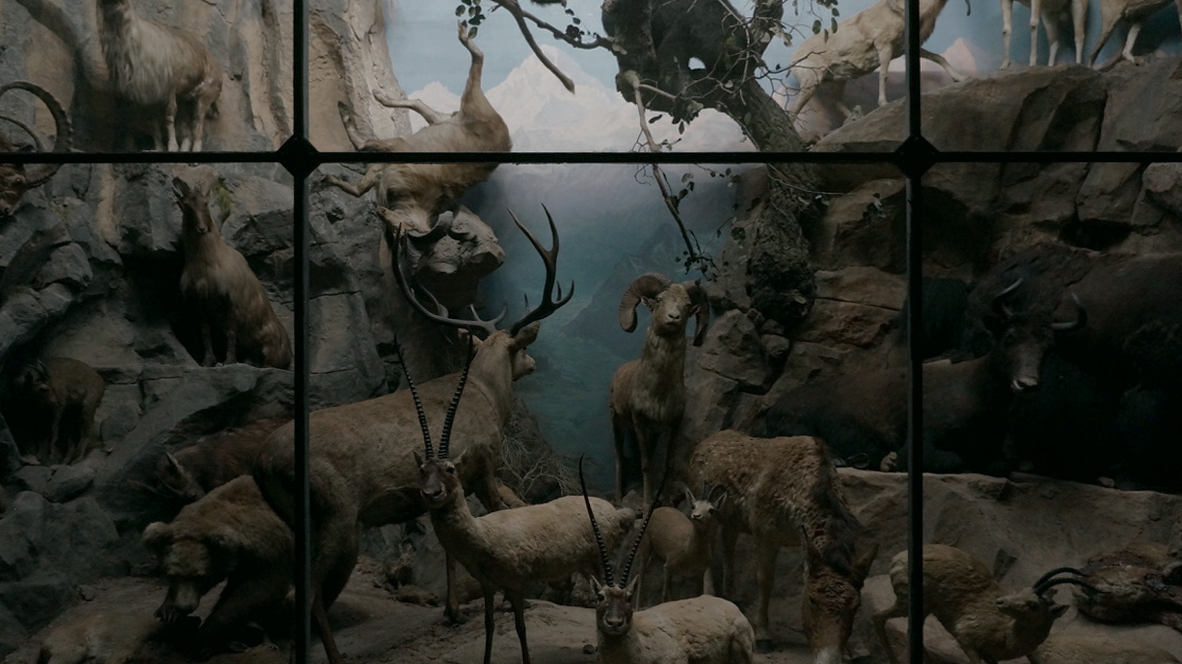Powell Cotton Museum | Quex House & Gardens | Birchington, UK | quexmuseum.org | Visited June 2019 |
Himalaya at dawn (constructed in 1905) is considered to be ‘the oldest untouched diorama of its type in any museum around the world’ (1: PC Museum Souvenir Guide, page 6) All animals on display were collected by explorer major Percy Horace Gordon Powell-Cotton (1866-1940), who holds the reputation for ‘potentially creating the largest collection of game ever shot by one man’. (2: Wikipedia)
At the same time, Powell-Cotton was an early and avid conservationist. His museum houses several natural history dioramas, the largest portion built only a couple of years before his death, and focusing on African wildlife. A special mention goes to the central diorama, a display of various primates: a highly aesthetic composition of trees, rocks, apes, and monkeys.

Himalaya at dawn is in another gallery, unimaginatively named ‘Gallery 2’, and is separated from the rest of the space by angled walls, emphasizing its altaresque character. This V-shaped space with its dark-colored walls enclose the diorama pretty tightly, cutting the peripheral view off and making it impossible to have a good overview from a bit of a distance.
Light is dim, as with most dioramas. The scene is separated from the viewer with a glass wall, made up out of 6 large glass panels, encased in a metal frame.
Himalaya at dawn is a composited scene: there are much more animals, both individuals and species, present in a small surface then there would ever be in reality. Also, an unrealistic amount of drama is going on in this one scene, most notably the falling mountain goat in the central background.
The density of the three dimensional foreground – and the dimmed lighting – contrasts the painted background: a wide view on a luscious, green valley with snow covered mountain tops, in the two-dimensional distance, lit in painted morning light. It’s almost as if the complex taxidermist compilation functions as an elaborate frame for the background painting.
Where are we?
We’re enclosed in a rocky lair, a small but high ravine, scarcely overgrown, but well below the tree-line, judging by the presence and size of the deciduous tree.
The ravine is halfway dawn, and judging by the light in the background, we’re facing South. The foreground is still covered in a nocturnal veil: no light is coming from our direction, suggesting we’re with our backs against a rock face or close to high and dense vegetation.
We are obviously trapped.
Oddly, some of the biggest animals are more or less hidden: the buck doesn’t face us, and the relaxing bull merges with the overhanging rock. The Himalayan brown bear – the largest mammal in the region – is a suspiciously small specimen.
About half of the animals is directly looking at us. The other half is busy grazing, clawing for something, staring somewhere else, or just chilling, except for the falling goat.
The goat appears to have fallen from a great height, and it just hit and extended rock. It’s less than 2 meters from the ground, but there’s a real danger it’ll roll into the narrow opening separating the 3 dimensional sculptural space from the 2 dimensional painted space.
The opening gives the impression there’s a steep abyss between these dimensions, so who knows where the goat would end up if it all were a moment in a time-based reality.
This is, however, not a time-based reality. This is a frozen scene. The goat has never fallen, nor will it ever fall, these animals never saw each other, and this place does not exist.

